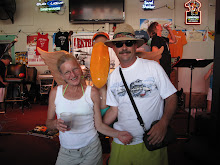Vinyl is a porous material
Vinyl pores must breathe and should not be clogged with
suntan lotions and body oils. Damage to the vinyl, due to improper cleaning,
along with commercial use and exposure, resulting in mildew and other fungi
becoming firmly rooted in the pores. The vinyl soon becomes stained and
virtually impossible to clean. At this point, the damage is done and it is time
for new vinyl. The use of vinyl "protectants" are not recommended
because they may combine with other chemicals in the commercial environment,
get baked in by the sun and clog the pores like oils. The vinyl may look great
for a while, and then they may suddenly start to break.
Commercial cleaning solutions and chlorine
It is a common misconception that pool chlorine,
household bleach, chlorine-based cleaners, and other strong solutions and
solvents are good for cleaning stained vinyl. Not true. These chemicals are
fatal to the vinyl’s finish. They will clean well for a time, but they clean by
removing layers of the finish along with the staining material on top of the
finish. After a while, it becomes impossible to clean the vinyl. It becomes
stiff and hard, loses its memory, and begins to crack and break. This is an inescapable
process that is accelerated two to three times or more by the use of harsh
chemicals. Pool chlorine is about four times stronger and much more caustic
than household bleach.
Clean with mild soap and warm water
Absent a suitable pressure washer, outdoor furniture
should be cleaned with a soft brush, using mild soap and very warm water. Soaps
that have emulsifiers that break down common stains and are scum free are the
best to use. After a few years, when the finish is worn and plain soap and
water will not clean the vinyl any more, begin to add small amounts of
household bleach. Start with a capful or two of bleach per gallon of filtered
water, working up to half and half during the following year or so. When a half
and half solution no longer cleans the vinyl, it's time to start thinking about
getting new vinyl straps.
Golf cart seats are often made of vinyl, as are many
automobile seats. Vinyl is used in golf cart seats because it is
weather-resistant and easy to clean. Clean weekly or bi-weekly, simply wipe
down the top surfaces and rinse with filtered water. Once every four to six
weeks, wipe down the bottom and back surfaces to control mildew.
Step 1
Move the golf cart into the shade and apply the parking
brake. Let the seats cool down, if the cart was in the sun, before cleaning
them.
Step 2
Fill a bucket with warm water, and add a quarter-sized
amount of dish detergent. Mix the solution until it becomes soapy and bubbly.
Step 3
Use the sponge to clean the backrest of the seats first.
Cleaning this part first is important because when you clean the backrest,
soiled water will drip down over the bottom of the seat --- which you only want
to clean once. Wring out the sponge first, so you don't soak the seat and add
to drying time.
Step 4
Use the old toothbrush to clean the seams and stitching of
the seat. This is a great tool to access crevices where dirt likes to collect.
Step 5
Rinse the sponge to remove any soiled water that has been
absorbed. Dip the sponge in the soapy water again and use it to scrub and clean
the bottom part of the seat.
Step 6
Dump out the dirty water and refill the bucket with fresh
water. Rinse out the sponge, and use it and the fresh water to remove any
residue left on the seats.
Step 7
Use a dry towel to dry the seats off; do a thorough job with
the seats and seams, as damp seats are a magnet for dirt and bugs. It is also
important to dry the seats with a towel, not in the sun, as this could make the
vinyl brittle and cause it to crack.
Things You'll Need
Sponge
Bucket
Water
Liquid dish detergent
Old toothbrush
Towels



Thank you again for all the knowledge you distribute,Good post. I was very interested in the article, it's quite inspiring I should admit. I like visiting you site since I always come across interesting articles like this one.Great Job, I greatly appreciate that.Do Keep sharing! Regards,
ReplyDeleteClearView Surfaces
Great tips! This made cleaning vinyl golf cart seats so much easier. I like how simple the steps are. I also use a cover from National Golf Cart Covers to keep my seats cleaner for longer. Thanks for the helpful post!
ReplyDelete